-
 Bitcoin
Bitcoin $105,278.9859
4.61% -
 Ethereum
Ethereum $2,414.7741
8.20% -
 Tether USDt
Tether USDt $1.0007
0.05% -
 XRP
XRP $2.1600
7.53% -
 BNB
BNB $639.5433
3.75% -
 Solana
Solana $144.3830
9.37% -
 USDC
USDC $1.0001
0.02% -
 TRON
TRON $0.2742
3.84% -
 Dogecoin
Dogecoin $0.1640
8.57% -
 Cardano
Cardano $0.5811
7.49% -
 Hyperliquid
Hyperliquid $37.2466
5.28% -
 Sui
Sui $2.8243
14.84% -
 Bitcoin Cash
Bitcoin Cash $460.8816
2.22% -
 Chainlink
Chainlink $12.9580
11.75% -
 UNUS SED LEO
UNUS SED LEO $9.1359
1.23% -
 Avalanche
Avalanche $18.2302
10.30% -
 Stellar
Stellar $0.2463
7.80% -
 Toncoin
Toncoin $2.9151
7.18% -
 Shiba Inu
Shiba Inu $0.0...01163
9.79% -
 Hedera
Hedera $0.1532
14.01% -
 Litecoin
Litecoin $85.3310
6.29% -
 Monero
Monero $308.8215
2.90% -
 Ethena USDe
Ethena USDe $1.0007
0.03% -
 Polkadot
Polkadot $3.4259
9.42% -
 Dai
Dai $1.0002
0.01% -
 Bitget Token
Bitget Token $4.1742
3.19% -
 Uniswap
Uniswap $6.8272
8.53% -
 Pepe
Pepe $0.0...09939
12.29% -
 Pi
Pi $0.5358
6.03% -
 Aave
Aave $257.3092
12.83%
If the rising channel falls below the lower track, it will definitely fall sharply? In what cases is it a false breakthrough?
A rising channel breakdown may signal weakening bullish momentum, but confirmation through volume, candlestick patterns, and indicators is crucial to avoid false breakouts.
Jun 24, 2025 at 02:28 pm

Understanding the Rising Channel Pattern
A rising channel is a technical analysis pattern formed by two parallel lines that connect a series of higher lows and higher highs. This structure indicates an ongoing upward trend, with the lower boundary acting as support and the upper boundary serving as resistance. Traders often use this formation to anticipate potential price movements.
When prices move within this channel, they typically bounce between these boundaries. However, when price breaks below the lower trendline, it raises concerns about a possible reversal or continuation of a downtrend. The key question becomes: Is this a genuine breakdown or a false breakout?
Important: A rising channel breakdown does not always guarantee a sharp decline. Market context, volume, and confirmation are crucial in determining its validity.
What Happens When Price Breaks Below the Lower Trendline?
A break below the lower trendline can signal weakening bullish momentum. In many cases, traders interpret this as a bearish sign, potentially leading to aggressive selling pressure. However, this doesn't automatically mean a sharp drop will follow.
Several scenarios can unfold:
- Price retests the broken support as new resistance and then continues downward.
- False breakout occurs, where price briefly dips below the line before returning inside the channel.
- Sideways consolidation takes place, suggesting indecision rather than a clear reversal.
Important: Not every break results in a sharp fall. Confirmation through candlestick patterns, volume spikes, and other indicators is essential for accurate interpretation.
Identifying a False Breakout in a Rising Channel
A false breakout occurs when the price temporarily moves outside the channel but quickly reverses back into it. These deceptive signals can trap traders who act too quickly without waiting for confirmation.
Key characteristics of a false breakout include:
- Low trading volume during the breakout candle.
- Long wicks or tails on the candlestick, indicating rejection of the new level.
- Immediate return to the channel within the next few candles.
To identify a false breakout effectively:
- Monitor volume levels: A real breakdown usually comes with high volume.
- Use candlestick patterns like hammers, engulfing patterns, or dojis near the broken trendline.
- Apply moving averages or Bollinger Bands to assess whether the price is overextended.
Important: False breakouts are common in volatile crypto markets. Always wait for confirmation before making trading decisions based solely on price action.
How to Confirm a Legitimate Breakdown Below the Rising Channel
Confirming a valid breakdown involves more than just watching price cross a trendline. It requires a combination of tools and patience.
Here’s how to confirm a true breakdown:
- Check multiple timeframes: A breakdown on a 1-hour chart might be part of a larger uptrend on the daily chart.
- Observe volume: A significant increase in volume during the breakout increases the likelihood of a real move.
- Use oscillators like RSI or MACD: If momentum indicators align with the breakdown, it adds credibility.
- Wait for a retest failure: If price revisits the broken support and fails to hold above it, that confirms the new downtrend.
Important: Patience is critical. Entering a trade immediately after a breakout can lead to losses if the market reverses shortly after.
Case Studies: Real Examples from Cryptocurrency Charts
Let’s look at some historical examples from major cryptocurrencies:
- Bitcoin (BTC) – In early 2021, BTC broke below a rising channel but quickly bounced back due to strong buying pressure. This was a classic false breakout.
- Ethereum (ETH) – During late 2022, ETH experienced a clean breakdown from a rising channel, followed by a sharp selloff confirmed by increasing volume.
- Solana (SOL) – SOL had multiple fakeouts during mid-2023 where price dipped below the channel but later resumed the uptrend.
These examples illustrate that each asset reacts differently depending on broader market conditions and investor sentiment.
Important: Historical performance doesn’t guarantee future results, but studying past behavior helps improve decision-making skills.
Frequently Asked Questions
Q: Can I trade a rising channel without waiting for a breakout?
Yes, many traders use the rising channel to enter long positions near the support line and take profits near resistance. This strategy works best in clearly defined channels with consistent bounces.
Q: What timeframe is best for analyzing rising channels?
It depends on your trading style. Day traders may focus on 15-minute or 1-hour charts, while swing traders prefer 4-hour or daily charts for better reliability.
Q: Should I always close my position if price breaks below the rising channel?
Not necessarily. You should evaluate the strength of the breakout using volume and price action before deciding to exit.
Q: Are rising channels reliable in highly volatile cryptocurrency markets?
Rising channels can be effective, but they require careful monitoring. Due to volatility, false breakouts are frequent, so combining them with other tools improves accuracy.
Disclaimer:info@kdj.com
The information provided is not trading advice. kdj.com does not assume any responsibility for any investments made based on the information provided in this article. Cryptocurrencies are highly volatile and it is highly recommended that you invest with caution after thorough research!
If you believe that the content used on this website infringes your copyright, please contact us immediately (info@kdj.com) and we will delete it promptly.
- Little Pepe: The Next Ethereum 9000% Token Pump?
- 2025-06-24 18:45:12
- Bitcoin Holdings Strategy: Riding the $BTC Wave Like a Wall Street Pro
- 2025-06-24 18:25:12
- Mastercard, Fiserv, and Stablecoin Adoption: A New Era for Payments?
- 2025-06-24 19:05:12
- Mastercard, USDG Stablecoin, and Fiserv: Revolutionizing Payments or Just Another Fad?
- 2025-06-24 18:45:12
- XRP Price Surges Amid Market Tensions: A Token Rally to Watch
- 2025-06-24 19:26:05
- Middle East, Financial Safety, and International Crisis: Navigating the Volatility
- 2025-06-24 19:10:12
Related knowledge
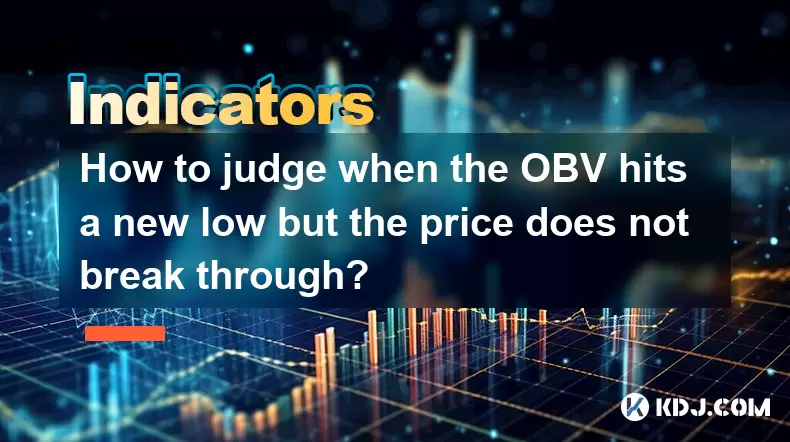
How to judge when the OBV hits a new low but the price does not break through?
Jun 24,2025 at 07:56pm
Understanding the Basics of OBV and Price ActionOn-Balance Volume (OBV) is a momentum indicator that uses volume flow to predict changes in stock or cryptocurrency prices. The core principle behind OBV is that volume often precedes price movement. When OBV hits a new low, but the price does not break through its previous support level, this can indicate...
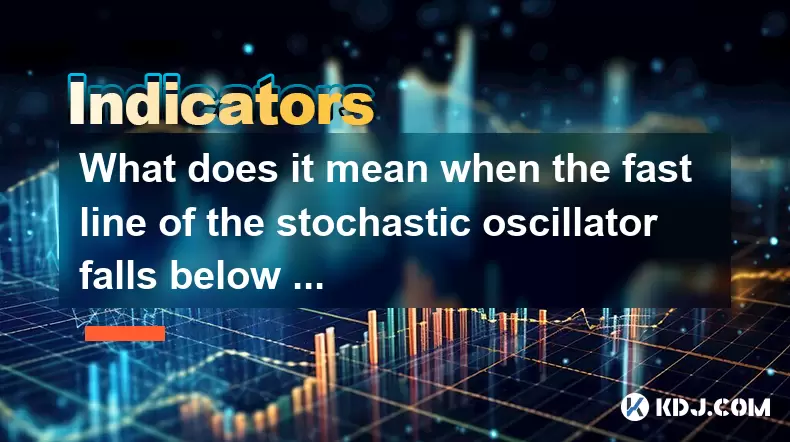
What does it mean when the fast line of the stochastic oscillator falls below the slow line?
Jun 24,2025 at 07:07pm
Understanding the Stochastic OscillatorThe stochastic oscillator is a momentum indicator used in technical analysis to assess overbought or oversold conditions in financial markets, including cryptocurrencies. It consists of two lines: the fast line (typically %K) and the slow line (typically %D). The fast line represents the current closing price relat...
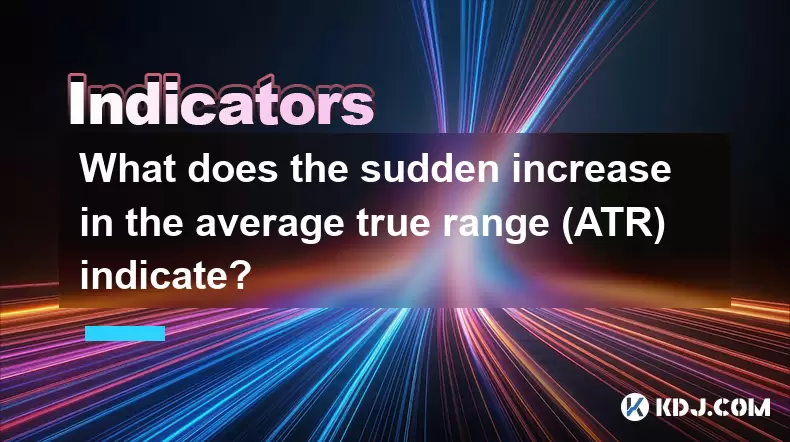
What does the sudden increase in the average true range (ATR) indicate?
Jun 24,2025 at 06:42pm
Understanding the Average True Range (ATR) in Cryptocurrency TradingThe Average True Range (ATR) is a technical indicator used by traders to measure market volatility. In the context of cryptocurrency, where prices can swing dramatically within short periods, ATR becomes an essential tool for assessing potential price movements. The ATR does not indicat...
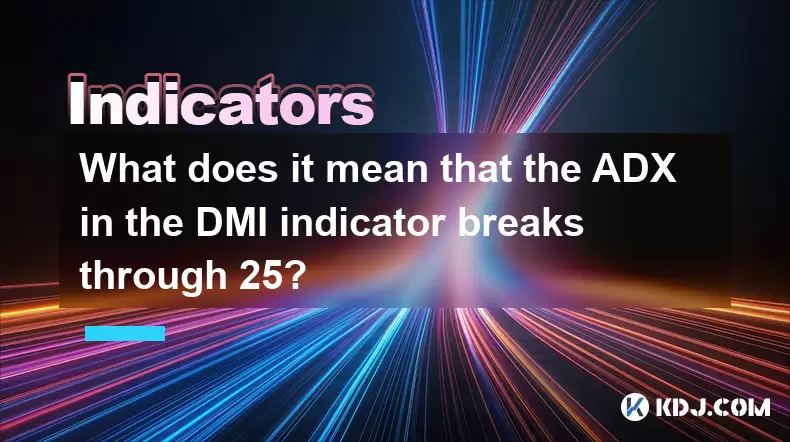
What does it mean that the ADX in the DMI indicator breaks through 25?
Jun 24,2025 at 06:21pm
Understanding the DMI Indicator and Its ComponentsThe Directional Movement Index (DMI) is a technical analysis tool used to identify the strength and direction of a trend in cryptocurrency markets. The indicator consists of two primary lines: the Positive Directional Indicator (+DI) and the Negative Directional Indicator (-DI). These lines help traders ...
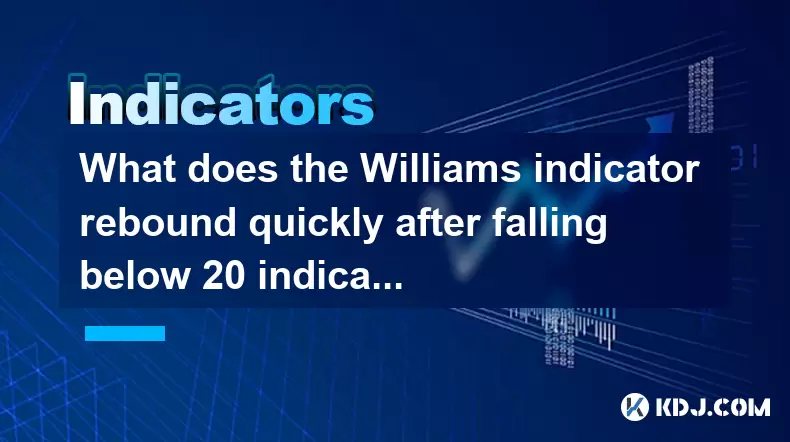
What does the Williams indicator rebound quickly after falling below 20 indicate?
Jun 24,2025 at 04:49pm
Understanding the Williams %R IndicatorThe Williams %R indicator, also known as Williams Percent Range, is a momentum oscillator used in technical analysis to identify overbought and oversold conditions in financial markets, including cryptocurrencies. It was developed by Larry Williams and typically operates on a scale from 0 to -100. In the context of...
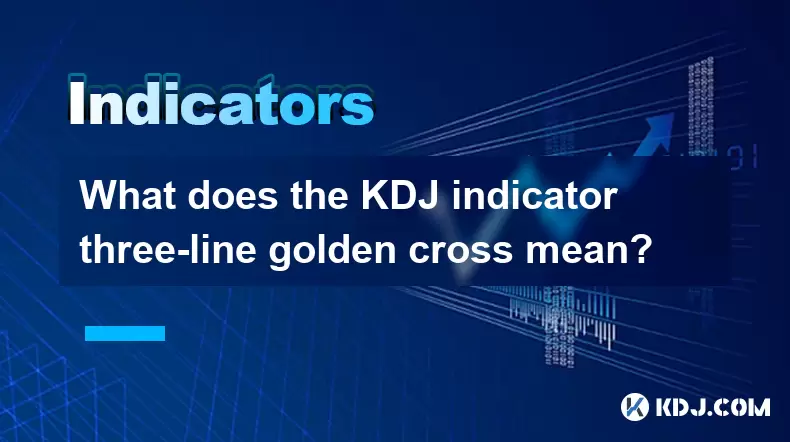
What does the KDJ indicator three-line golden cross mean?
Jun 24,2025 at 05:28pm
Understanding the KDJ Indicator in Cryptocurrency TradingThe KDJ indicator is a technical analysis tool widely used in cryptocurrency trading to identify potential buy and sell signals. It combines elements of two other indicators: the Stochastic Oscillator and the J line, which acts as a signal line. The KDJ consists of three lines — K, D, and J — each...

How to judge when the OBV hits a new low but the price does not break through?
Jun 24,2025 at 07:56pm
Understanding the Basics of OBV and Price ActionOn-Balance Volume (OBV) is a momentum indicator that uses volume flow to predict changes in stock or cryptocurrency prices. The core principle behind OBV is that volume often precedes price movement. When OBV hits a new low, but the price does not break through its previous support level, this can indicate...

What does it mean when the fast line of the stochastic oscillator falls below the slow line?
Jun 24,2025 at 07:07pm
Understanding the Stochastic OscillatorThe stochastic oscillator is a momentum indicator used in technical analysis to assess overbought or oversold conditions in financial markets, including cryptocurrencies. It consists of two lines: the fast line (typically %K) and the slow line (typically %D). The fast line represents the current closing price relat...

What does the sudden increase in the average true range (ATR) indicate?
Jun 24,2025 at 06:42pm
Understanding the Average True Range (ATR) in Cryptocurrency TradingThe Average True Range (ATR) is a technical indicator used by traders to measure market volatility. In the context of cryptocurrency, where prices can swing dramatically within short periods, ATR becomes an essential tool for assessing potential price movements. The ATR does not indicat...

What does it mean that the ADX in the DMI indicator breaks through 25?
Jun 24,2025 at 06:21pm
Understanding the DMI Indicator and Its ComponentsThe Directional Movement Index (DMI) is a technical analysis tool used to identify the strength and direction of a trend in cryptocurrency markets. The indicator consists of two primary lines: the Positive Directional Indicator (+DI) and the Negative Directional Indicator (-DI). These lines help traders ...

What does the Williams indicator rebound quickly after falling below 20 indicate?
Jun 24,2025 at 04:49pm
Understanding the Williams %R IndicatorThe Williams %R indicator, also known as Williams Percent Range, is a momentum oscillator used in technical analysis to identify overbought and oversold conditions in financial markets, including cryptocurrencies. It was developed by Larry Williams and typically operates on a scale from 0 to -100. In the context of...

What does the KDJ indicator three-line golden cross mean?
Jun 24,2025 at 05:28pm
Understanding the KDJ Indicator in Cryptocurrency TradingThe KDJ indicator is a technical analysis tool widely used in cryptocurrency trading to identify potential buy and sell signals. It combines elements of two other indicators: the Stochastic Oscillator and the J line, which acts as a signal line. The KDJ consists of three lines — K, D, and J — each...
See all articles
























































































